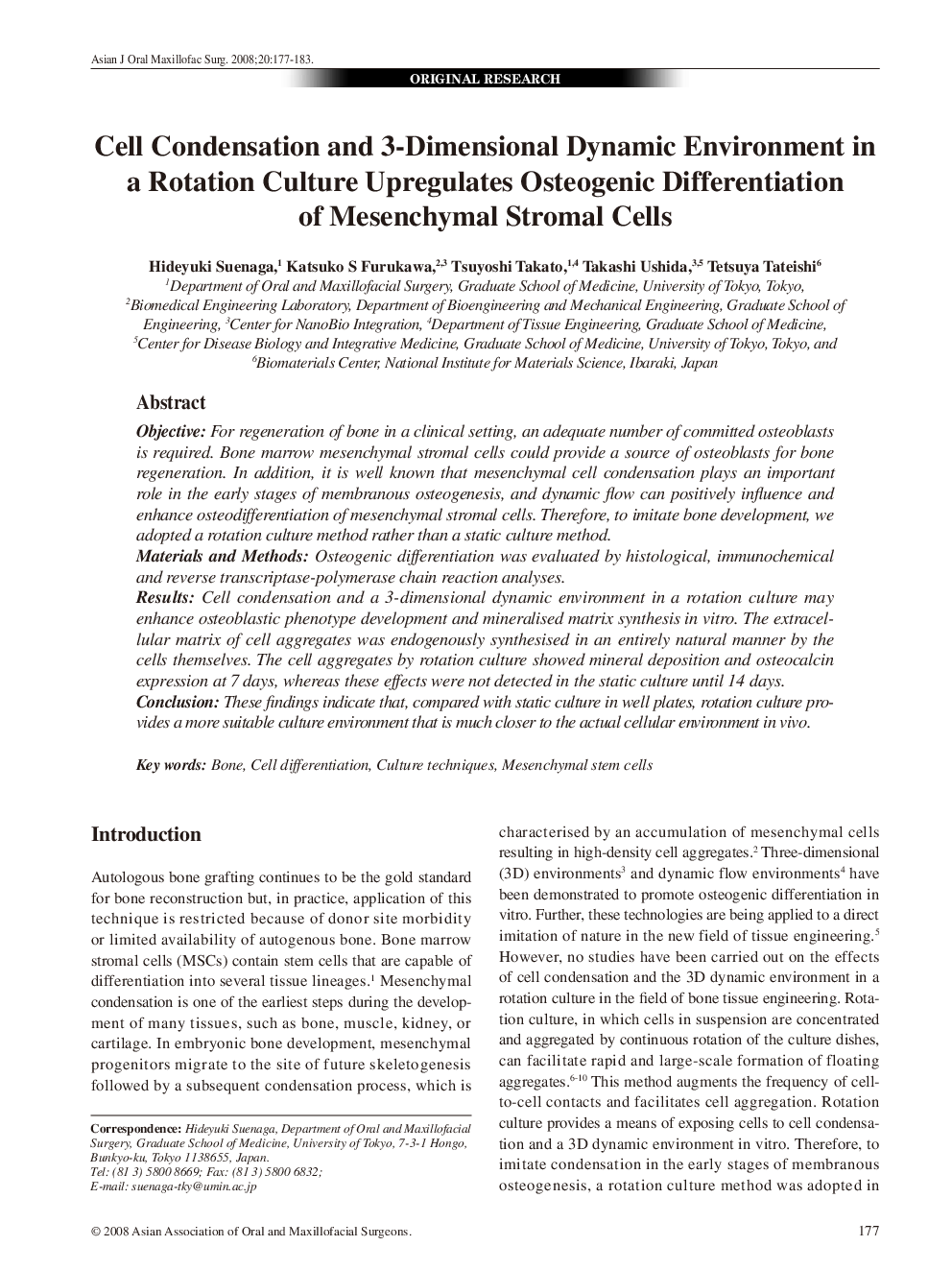| Article ID | Journal | Published Year | Pages | File Type |
|---|---|---|---|---|
| 3122184 | Asian Journal of Oral and Maxillofacial Surgery | 2008 | 7 Pages |
Objective: For regeneration of bone in a clinical setting, an adequate number of committed osteoblasts is required. Bone marrow mesenchymal stromal cells could provide a source of osteoblasts for bone regeneration. In addition, it is well known that mesenchymal cell condensation plays an important role in the early stages of membranous osteogenesis, and dynamic flow can positively influence and enhance osteodifferentiation of mesenchymal stromal cells. Therefore, to imitate bone development, we adopted a rotation culture method rather than a static culture method.Materials and Methods: Osteogenic differentiation was evaluated by histological, immunochemical and reverse transcriptase-polymerase chain reaction analyses.Results: Cell condensation and a 3-dimensional dynamic environment in a rotation culture may enhance osteoblastic phenotype development and mineralised matrix synthesis in vitro. The extracellular matrix of cell aggregates was endogenously synthesised in an entirely natural manner by the cells themselves. The cell aggregates by rotation culture showed mineral deposition and osteocalcin expression at 7 days, whereas these effects were not detected in the static culture until 14 days.Conclusion: These findings indicate that, compared with static culture in well plates, rotation culture provides a more suitable culture environment that is much closer to the actual cellular environment in vivo.
